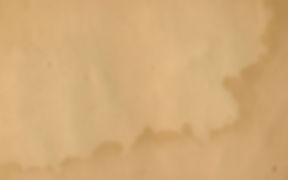
BLACK MOUNTAIN COMPLEX PETROGLYPHS
Recovering Indian history from ancient Native American rock writings.
Effigy Symbols
Effigy symbols are those that resemble or 'look like' humans or animals. These figures should NOT be confused with representing those specific beings, because the ancient Native American Shaman often used metaphorical analogies to promote an understanding of the knowledge they were attempting to impart upon their patrons.
Within the Black Mountain Complex, two effigies are paramount humans (anthropomorphic figures) and mountain sheep, neither of which represents its appearance. The figures below demonstrate how the human and sheep figures were used to represent 'historical' events that occurred around seven and five thousand years ago.
First is the common mountain sheep:
Everyone looking at the graphic sees a sheep, in generic terms; few recognize that it is a mature, female sheep. It actually represents women, specifically the adult females; mothers, daughters, aunts and grandmothers of a group referring to itself as mountain sheep.
The swept back horns identify the sheep as female. The sheep is recognized as an adult, because only adult representations are given horns. The horns are a status symbol, they identify the image as being a member of the tribe. Children and adolescent sheep, regardless of sex, are not given horns, because they are not full members of the tribe, they are dependents.
Male Child/Adolescent
The male sheep are given horns that resemble a capital "M", as demonstrated in the graphic above. Children or adolescent sheep are represented in glyphs as an emotional accent to the existence and exposure of the children to the recorded events. In modern terms, the children are used to explain the extent of the genocide; the killing of all the men, women, children and elderly in order to eradicate them as potential enemies, along with their memories, for all time.
However, as stipulated earlier, the sheep is not a sheep, it is an analogy that can be broken down into its components parts. (1) The legs point down, meaning death. The legs are attached to the group symbol, meaning the group is dead. (2) The entire group/tribe as a whole. (3) A connecting line that establishes a relationship between the large group and the smaller group. (4) A smaller group connected to both the larger group and the set of horns, meaning the smaller group consist of women. (5) Swept back horns indicating female.
The horns curve back toward the large group/body, meaning to return. Therefore, the sheep is a compound symbol meaning, most of the group was killed, but a small group of women, members of the dead group/tribe gave birth and the large group/tribe returned from the dead.
Anthropomorphic figures:
Anthropomorphic figures are also compound symbols, they represent the 'historic' battle that took place seven thousand years ago:
The anthropomorphic figure above can be broken down into its component parts. (1) The legs represent the two fronts of the battle.
(2) The legs joining represent the consolidation and reorganizations of the group, after the survivors of both front retreated up the mountain. (3) Represents the journey/travel up the mountain. (4) Represents those who died after they were pushed off the cliffs on the West wall. (5) Represents those who died after they were pushed off the cliffs on the East wall. (6) Represents the entire group united in death.
The graphic above demonstrates segments 1 through 3 of the anthropomorphic figure: fronts/legs, consolidation and travel up the mountain.
The graphic above demonstrates the 4th and 5th segments of the anthropomorphic figure: The defenders being pushed off the right and left sides of the spur.
The graphic above demonstrates segment six of the anthropomorphic figure: The end of the battle, the captured survivors surrounded by the victorious Hokan, the aftermath of torture and mutilation and the unity of purpose for which all of the Paleo-Uto-Aztecans had given their lives.
More will be added to this page as our knowledge and understanding increase.









The purpose of this site is to inspire awareness, preservation and research of all rock art/writings. As the site grows and develops, it is hoped that YOU will help in these efforts by submitting questions, comments and suggestions: Our primary means of communication is the 'Contact' button above.
© 2023 by My site name. Proudly created with Wix.com